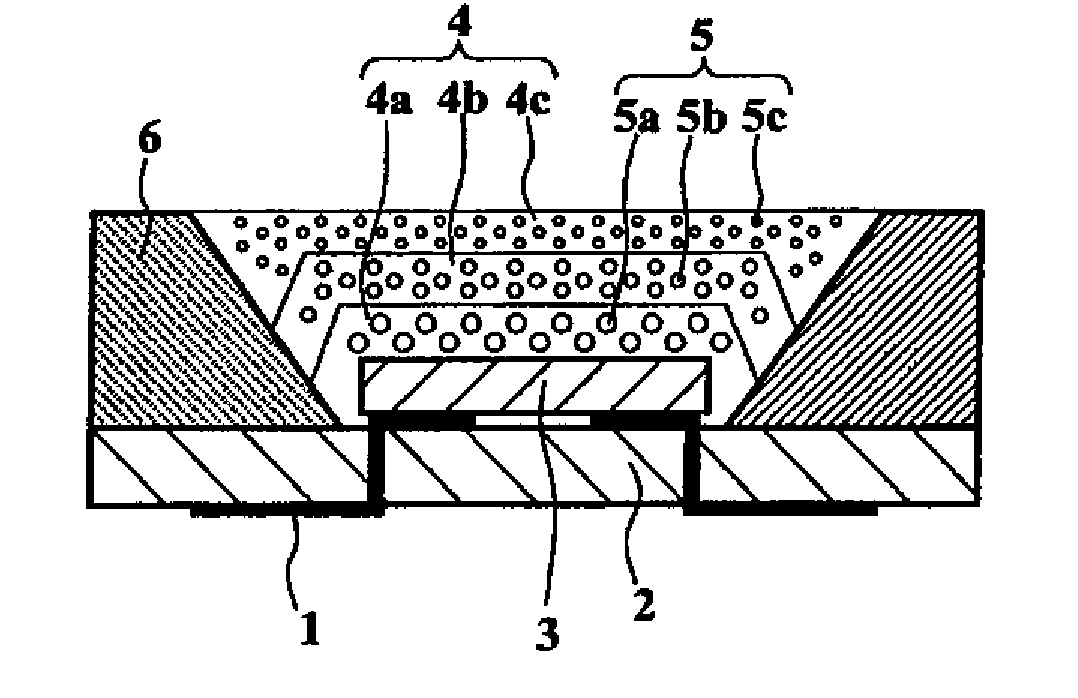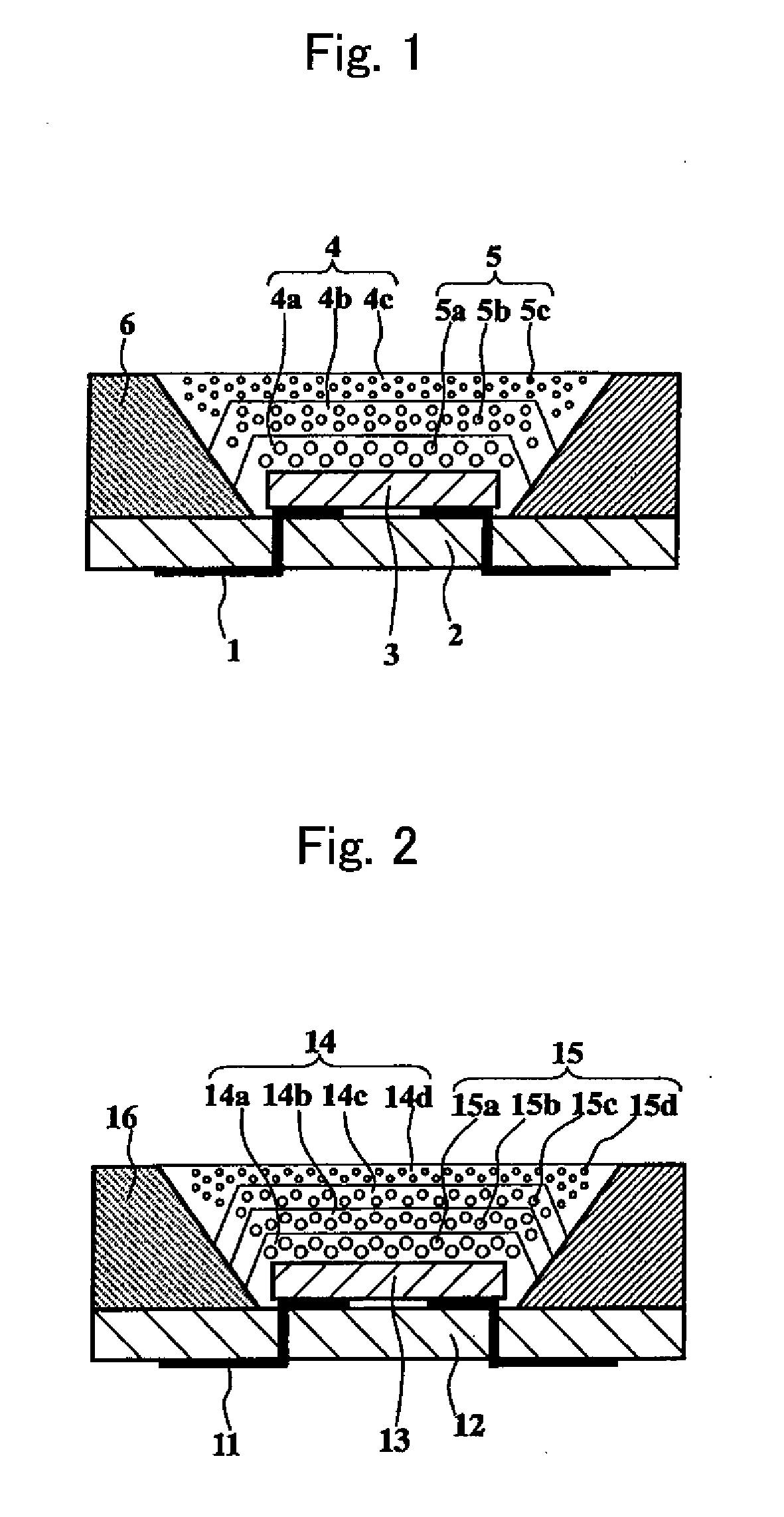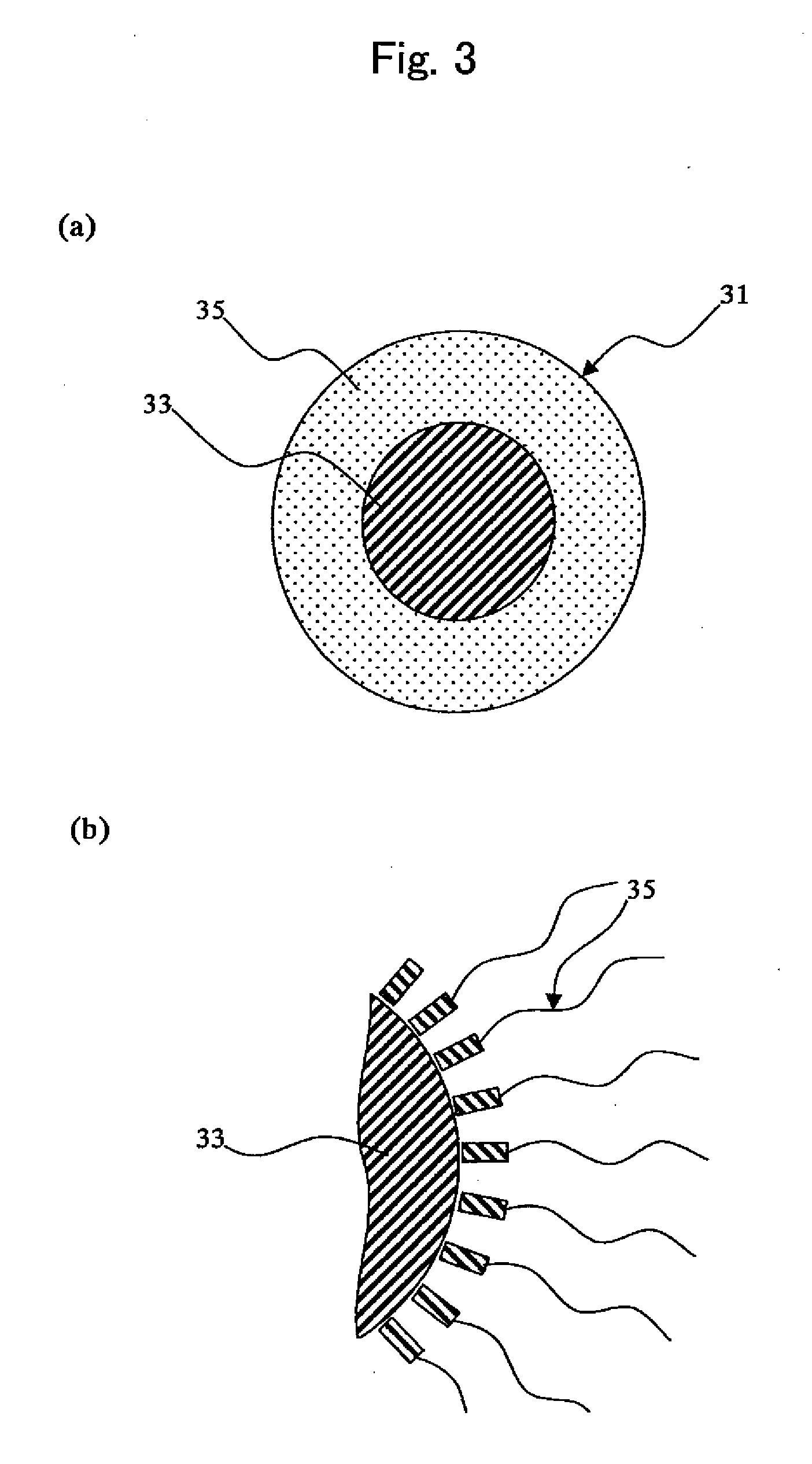Wavelength Converter, Light-Emitting Device, Method of Producing Wavelength Converter and Method of Producing Light-Emitting Device
a technology of light-emitting devices and wavelength converters, which is applied in the manufacture of electric discharge tubes/lamps, discharge tubes luminescent screens, instruments, etc., to achieve the effects of inhibiting the deterioration of fluorescence characteristics, reducing self-quenching of phosphors, and high luminous efficiency
- Summary
- Abstract
- Description
- Claims
- Application Information
AI Technical Summary
Benefits of technology
Problems solved by technology
Method used
Image
Examples
example 1
[0179]A light-emitting device in FIG. 1 was produced. First, a light-emitting element composed of nitride semiconductor was formed on a light-emitting element substrate composed of sapphire through metal organic chemical vapor deposition method.
[0180]As the structure of the light-emitting element, n-type GaN layer which is undoped nitride semiconductor, GaN layer as n-type contact layer having an n-type electrode of Si dope, n-type GaN layer which is undoped nitride semiconductor, GaN layer as barrier layer constituting an emission layer, InGaN layer constituting a well layer and GaN layer as barrier layer were formed as one set on a light-emitting element substrate, and multiquantum well structure wherein the InGaN layer sandwiched by GaN layers was composed of five stacked layers was adopted.
[0181]The light-emitting element was mounted in a package wherein an insulating substrate having wiring pattern for disposing a near-ultraviolet LED formed, and a flame-like reflection member ...
example 2
[0197]A light-emitting device was produced through the following method. First, a light-emitting element composed of nitride semiconductor was formed on a light-emitting element substrate composed of sapphire through metal organic chemical vapor deposition method.
[0198]As the structure of the light-emitting element, n-type GaN layer which is undoped nitride semiconductor, GaN layer as n-type contact layer having an n-type electrode of Si dope, n-type GaN layer which is undoped nitride semiconductor, GaN layer as barrier layer constituting an emission layer, InGaN layer constituting a well layer and GaN layer as barrier layer were formed as one set on a light-emitting element substrate, and multiquantum well structure wherein the InGaN layer sandwiched by GaN layers was composed of five stacked layers was adopted.
[0199]The light-emitting element was mounted in a package wherein an insulating substrate having wiring pattern for disposing a near-ultraviolet LED formed, and a flame-like...
example 3
[0206]With regard to semiconductor ultrafine particles CdSe used in Example 2, changing the type of surface-modifying molecules, luminescence characteristics of semiconductor ultrafine particles were evaluated.
[0207]First, a method of producing CdSe ultrafine particles that are semiconductor ultrafine particles will be described. 7.9 g (0.1M) of Se powder manufactured by Kanto Chemical Co., Inc. was dissolved in 250 g of trioctylphosphine (TOP), and this was named Solution 1. Next, 7.6 g (0.1M) of sodium sulfide manufactured by Kanto Chemical Co., Inc. was dissolved in 250 g of trioctylphosphine (TOP), and this was named Solution 2.
[0208]Then, 5.3 g (0.02M) of cadmium acetate manufactured by Kanto Chemical Co., Inc. and 100 g of stearic acid were mixed and dissolved at 130° C. 400 g of trioctylphosphineoxide (TOPO) was added to this solution, heated to 300° C. and dissolved.
[0209]The above Solution 1 was added to this solution and reacted under the condition of 300° C. After complet...
PUM
 Login to View More
Login to View More Abstract
Description
Claims
Application Information
 Login to View More
Login to View More - R&D
- Intellectual Property
- Life Sciences
- Materials
- Tech Scout
- Unparalleled Data Quality
- Higher Quality Content
- 60% Fewer Hallucinations
Browse by: Latest US Patents, China's latest patents, Technical Efficacy Thesaurus, Application Domain, Technology Topic, Popular Technical Reports.
© 2025 PatSnap. All rights reserved.Legal|Privacy policy|Modern Slavery Act Transparency Statement|Sitemap|About US| Contact US: help@patsnap.com



